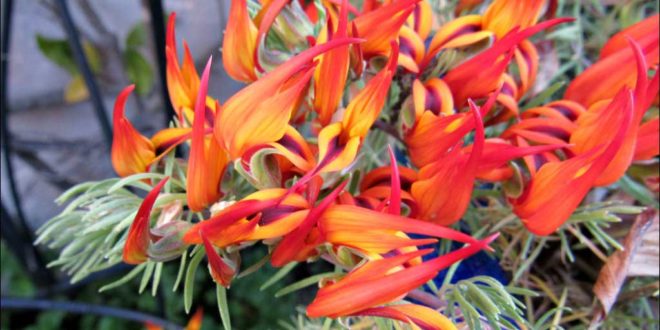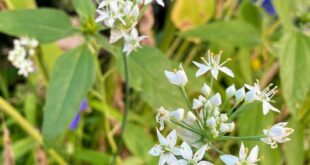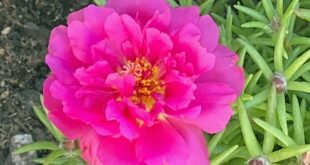The stunning, brightly colored unusually shaped blooms of the evergreen trailing plant Lotus berthelotii, commonly called parrot’s beak, brings a tropical feel to your garden or landscape. Native to the Canary and Cape Verde Islands off the west coast of Africa, Parrot’s beak is a sun-loving perennial that can be grown as an annual in areas below U.S. Department of Agriculture plant hardiness zone 10. Parrot’s beak can also grow as a tropical houseplant or hanging plant, providing year-round greenery indoors. The silver-gray needle-like lives, spaced along the stems in attractive whorls, contrast with the pea-like, 1 in. long bright crimson flowers.
We are growing it in a 24 inch tall pot with Canna lilies.
No matter how you choose to use the parrot’s beak, proper care is essential.
- Plant parrot’s beak where it will receive full sunlight. If you’re growing it indoors, place it near a south-facing window where it will get six to eight hours of sunlight a day.
- Add organic matter to the original soil with a garden trowel if the soil is poor. Parrot’s beak prefers well-draining, fertile soil.
- Water the soil around the parrot’s beak regularly but do not allow the plant to sit in soggy soil. It is best to wait until the top layer of soil is dry before watering. This plant can withstand some drought but cannot handle soggy roots, which could lead to root rot.
- Feed the plant every two weeks during the spring and summer with a water-soluble, all-purpose fertilizer. Alternatively, apply slow-release fertilizer once a year at the beginning of spring.
- Prune dead, diseased, dying or damaged branches with a pair of sharp pruning shears. Dispose of the removed branches. Promote branching on the parrot’s beak by pinching the ends of the stems.
- Examine the plant regularly for spider mites, aphids and mealy bugs. Coat the foliage and branches of the parrot’s beak with horticultural oil or insecticidal soap on a calm day when the temperatures will not reach 90 degrees Fahrenheit to kill the insects.
See http://homeguides.sfgate.com/care-lotus-berthelotii-31816.html for more info
Nursery: Yamagami of Cupertino
First planted: Fall 2016








